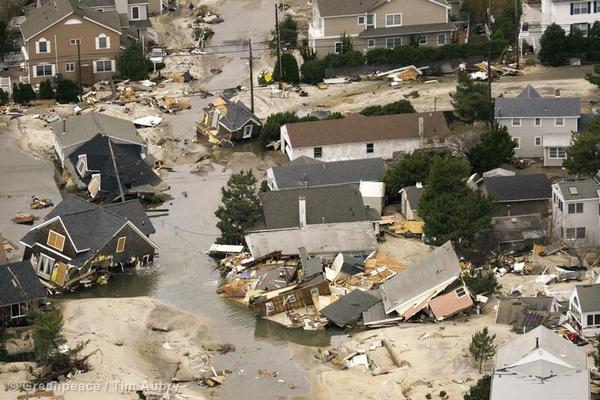 New Jersey has proposed using federal Sandy relief funds to set up an Energy Resilience Bank that would fund projects to make the state’s energy infrastructure more resilient in the face of extreme weather events. The Bank is an innovative proposal that will help New Jersey prepare for the future in the wake of Superstorm Sandy, which destroyed thousands of homes and businesses, causing human loss and suffering that continues for many today.
New Jersey has proposed using federal Sandy relief funds to set up an Energy Resilience Bank that would fund projects to make the state’s energy infrastructure more resilient in the face of extreme weather events. The Bank is an innovative proposal that will help New Jersey prepare for the future in the wake of Superstorm Sandy, which destroyed thousands of homes and businesses, causing human loss and suffering that continues for many today.
Climate change increases the likelihood that New Jersey will continue to be buffeted by storms such as Sandy, which exposed and underscored the need to upgrade to a more resilient, low-carbon energy infrastructure when a third of the state lost power for nearly a week. The Energy Resilience Bank, which will be capitalized at $210 million, would help expedite this process, allowing the state to keep the lights on and residents safer during the next storm.
The creation of an Energy Resilience Bank was proposed as part of an Action Plan Amendment, released last week by Governor Christie’s office, detailing how federal Sandy relief funds would be spent in the state. In October, the U.S. Department of Housing and Urban Development (HUD) announced a second allocation of Community Development Block Grant (CDBG) Disaster Recovery funds, awarding New Jersey an additional $1.46 billion for Sandy-related rebuilding needs. The first tranche of $1.8 billion was approved by HUD in April last year. In addition to targeting unmet housing and economic revitalization needs, the second allocation will also cover unmet infrastructure needs in the areas of energy, communications, waste and wastewater systems and transportation projects.
Meeting New Jersey’s resilience objectives will require accelerated and aggressive deployment of energy efficiency and on-site, distributed power generation technologies (such as solar PV) throughout the state. Distributed generation initiatives on such a scale will require substantial amounts of capital. With federal, state, and local governments strapped for cash, it’s clear that the bulk of the capital required to invest in distributed generation will have to come from the private sector.
The proposed Energy Resilience Bank, which is similar to the “Green Bank” construct supported by EDF in other jurisdictions, would help spur this private financing. At this point we believe that the State would be well advised to consider this construct as it would leverage public funds and authority to lower the cost and increase the amount of private financing for distributed generation technology. A ‘green bank’ model would also drive innovation, fuel local and regional economic growth, and aid in job creation.
New Jersey can facilitate the creation of robust energy finance mechanisms that have the potential to transform the state’s energy markets. In this way, New Jersey can help to unlock private capital market activity to boost energy resilience as well as larger environmental and market objectives.










